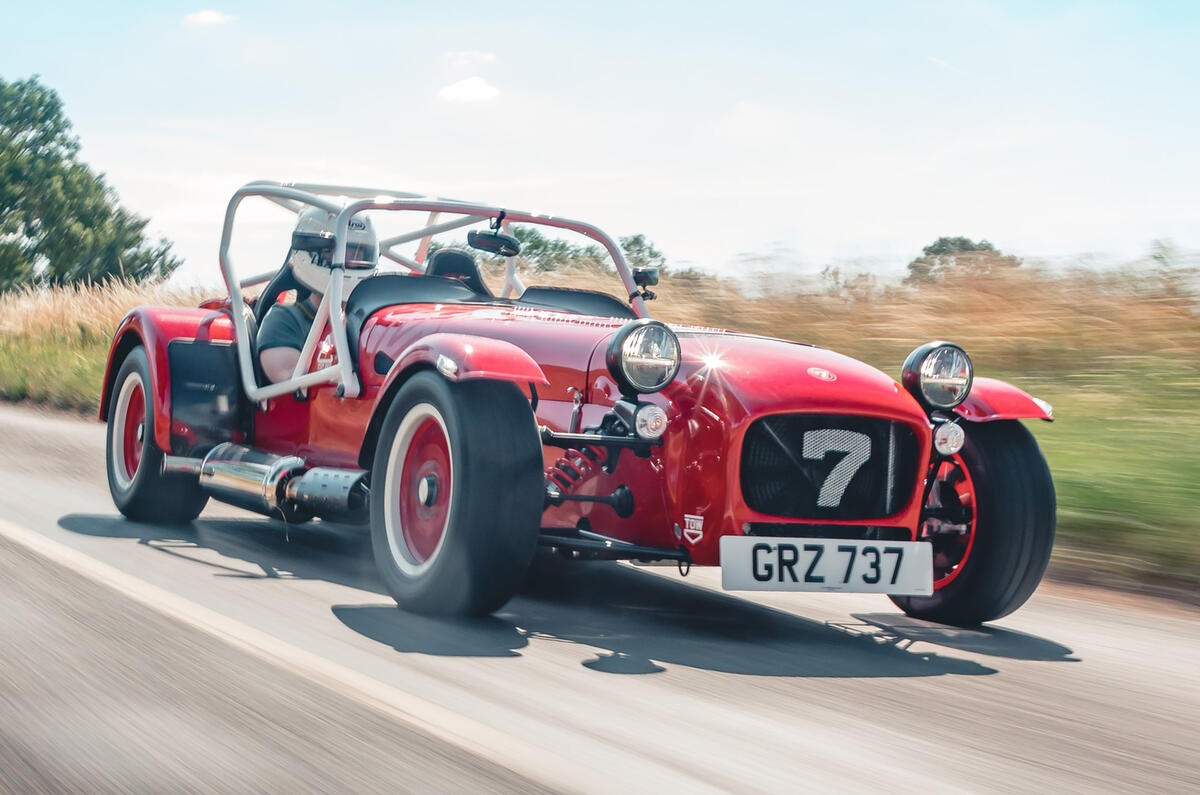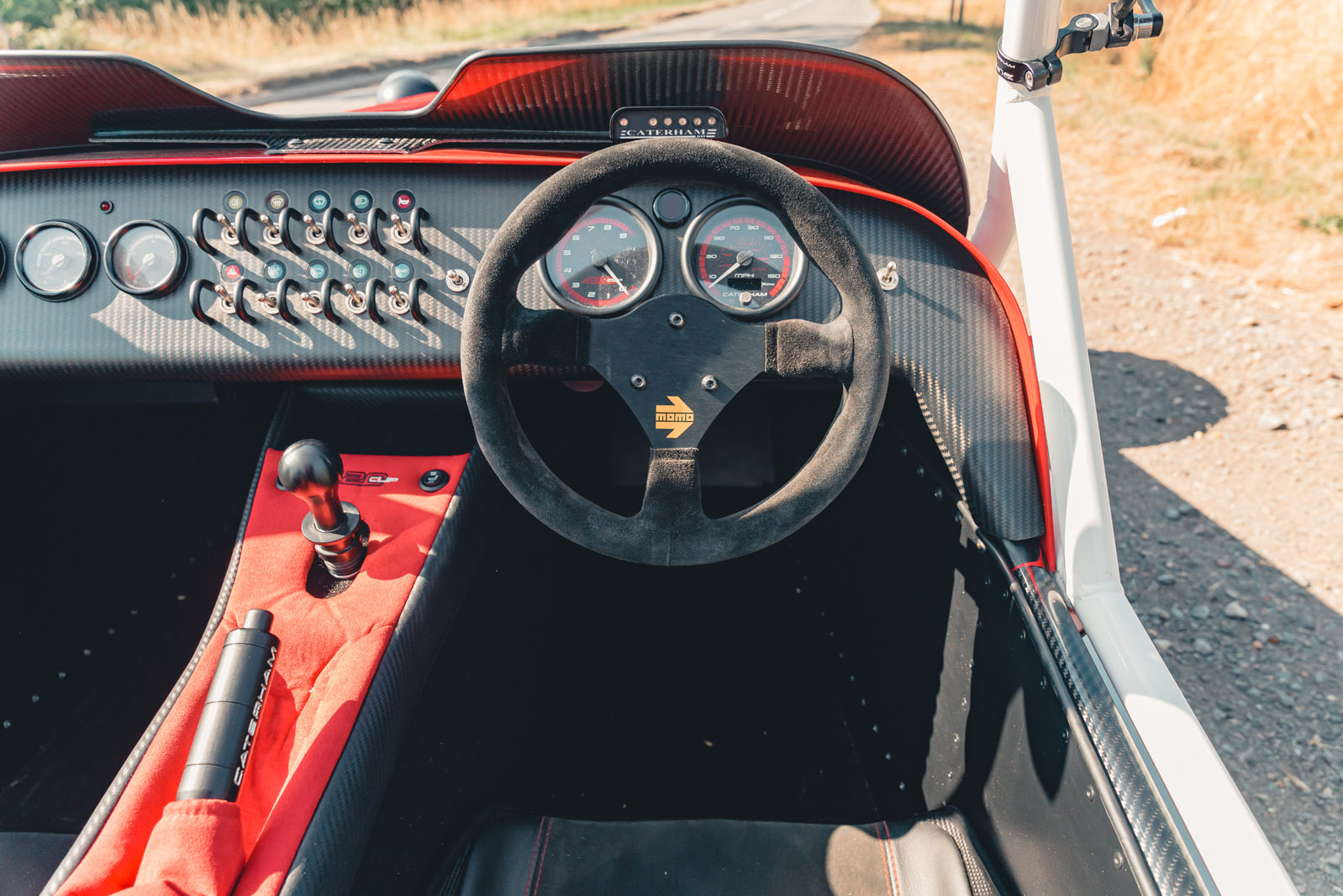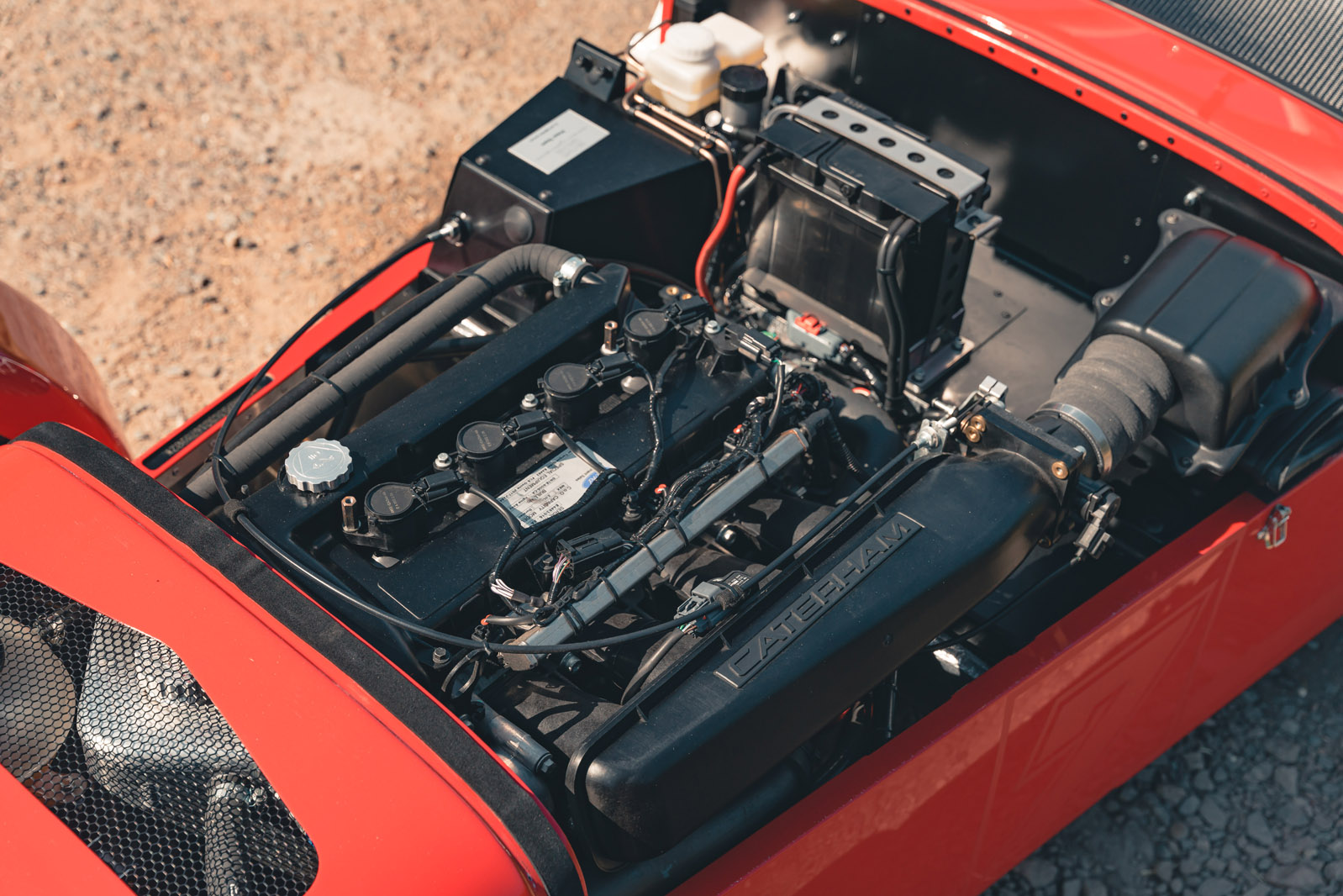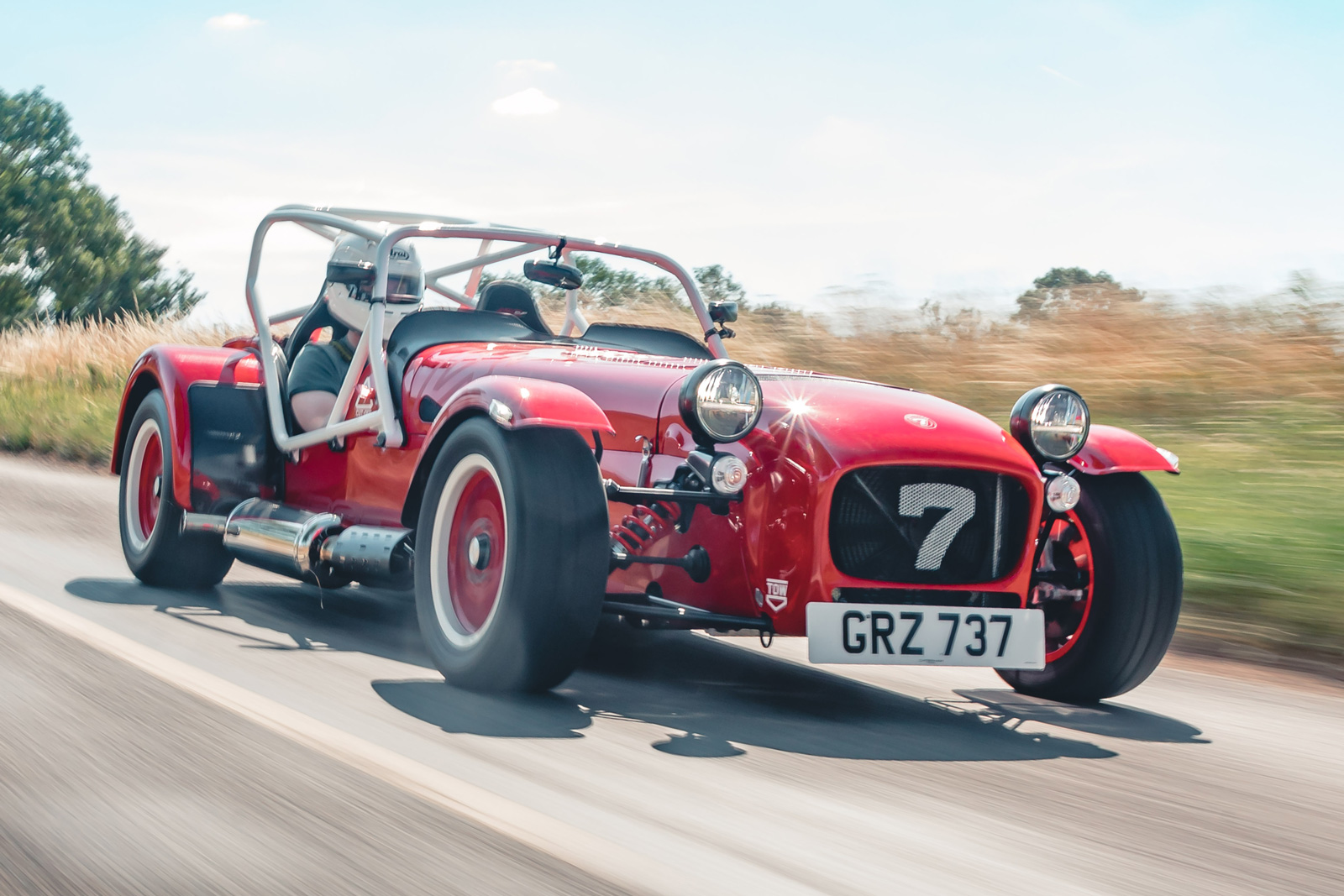At the same time, this naturally aspirated engine simply doesn’t have the goods to unstick the rear tyres with anything less than a clutch-dropping standing start or with pretty ham-fisted cornering. It means the 420 Cup feels dependable, and you can get stuck into the driving controls without worrying which hedge you’re going to be fired into for enjoying yourself a little too much. And enjoy yourself you will, because the deft cornering balance, plus the intimate but iron-veined unassisted steering and, of course, the innate lightness of the thing, allow any Seven to serve up driving sensations few other cars could dream of offering.
Comfort and Isolation

The 420 Cup, more so in windscreen-less guise, wears its unwillingness to coddle occupants like a badge of honour. Now, it’s important to say that for track-day driving, there’s really very little to complain about here. The car is raw and all-encompassing but also comfortable enough that you could do a 45-minute stint and hop out feeling well exercised but reasonably fresh. The seats clamp you into place securely and at speed the lightness of the steering makes this chassis easy enough to flow through consecutive high-load corners.
However, the 420 Cup also has numberplates, so we need to address its on-road characteristics, which are uncompromising in the extreme. So loud are the straight-cut cogs of the gearbox that at anything below about 3000rpm they drown out the exhaust boom, which is hardly dulcet. Earplugs are recommended, even underneath a helmet, which will need to be full-face if you’re to avoid swallowing flies or, less amusingly, stones flicked up by vehicles ahead.
As for ride quality, slackening the dampers to their softest gives fine primary ride but it can’t mitigate the general jolts that come with driving what is essentially a bathtub on wheels. The pedal box is also cosy in the extreme, but at least the clutch pedal is firm enough for you to rest your redundant left foot on it while cruising.
Admittedly, the 105mm-wider, 250mm-longer (and 25kg-heavier) SV chassis and a windscreen would mitigate much of the above, but stray too far from the pared-back template and you miss the point of the 420 Cup, don’t you? Fact is this track-day hero of a Seven is not for faint of heart and neither should it be.
Track Notes
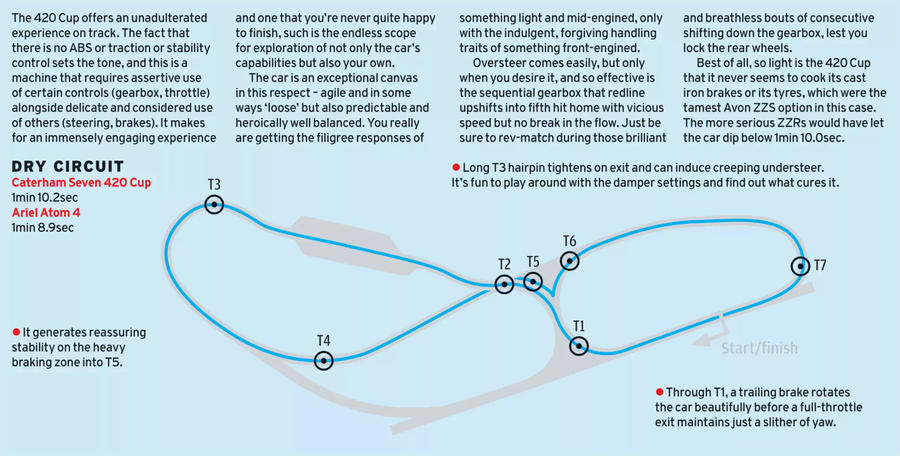
The 420 Cup offers an unadulterated experience on track. The fact that there is no ABS or traction or stability control sets the tone, and this is a machine that requires assertive use of certain controls (gearbox, throttle) alongside delicate and considered use of others (steering, brakes). It makes for an immensely engaging experience and one that you’re never quite happy to finish, such is the endless scope for exploration of not only the car’s capabilities but also your own.
The car is an exceptional canvas in this respect – agile and in some ways ‘loose’ but also predictable and heroically well balanced. You really are getting the filigree responses of something light and mid-engined, only with the indulgent, forgiving handling traits of something front-engined.
Oversteer comes easily, but only when you desire it, and so effective is the sequential gearbox that redline upshifts into fifth hit home with vicious speed but no break in the flow. Just be sure to rev-match during those brilliant and breathless bouts of consecutive shifting down the gearbox, lest you lock the rear wheels.
Best of all, so light is the 420 Cup that it never seems to cook its cast iron brakes or its tyres, which were the tamest Avon ZZS option in this case. The more serious ZZRs would have let the car dip below 1min 10.0sec.


